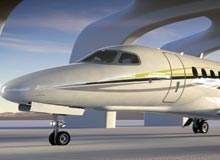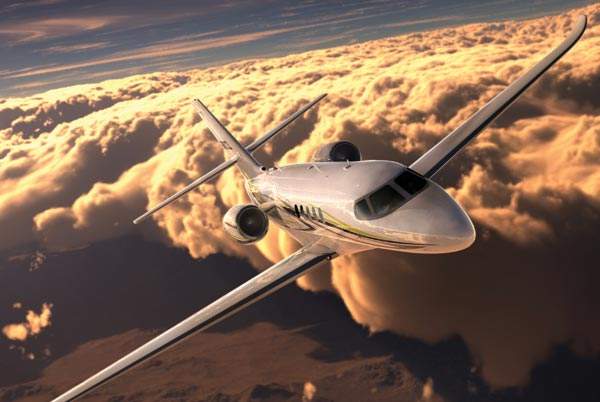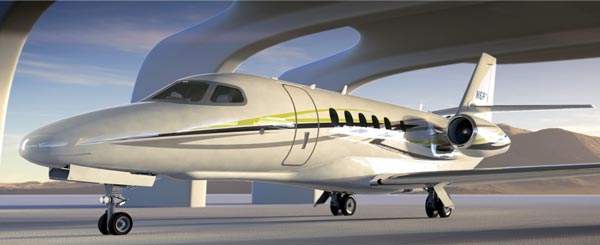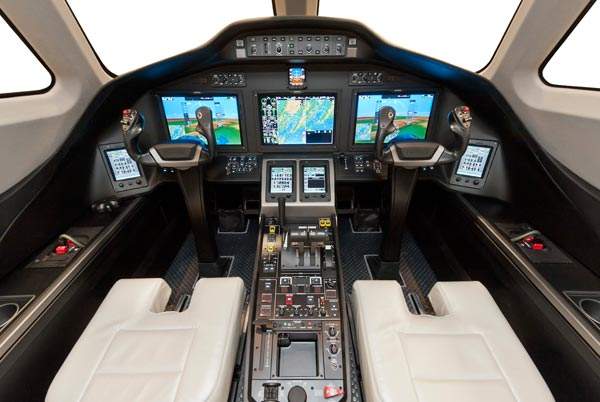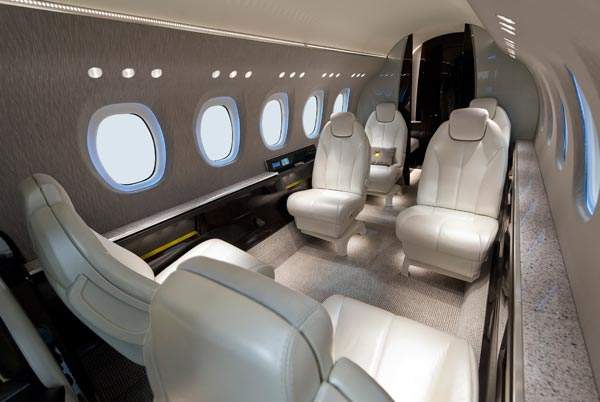Citation Latitude is a new light business jet designed by Cessna Aircraft Company (Cessna). It is a low-wing aircraft with retractable tricycle landing gear and cruciform tail. Cessna announced the new aircraft project at the National Business Aviation Association (NBAA) Convention in October 2011.
In 2012, NetJets signed a contract with Cessna for 150 Citation Latitudes, including 25 firm orders and options for 125 aircraft.
The first prototype made its first flight in February 2014.
Citation Latitude obtained type certification from the US Federal Aviation Administration (FAA) in June 2015. The aircraft made its public presence at the annual NBAA Convention & Exhibition in October 2014.
The first Citation Latitude was rolled out in January 2015. The European Aviation Safety Agency (EASA) certified Citation Latitude in February 2016.
The aircraft is positioned between Citation XLS+ and Citation Sovereign business jets and will cost approximately $14.9m.
Design and main features of the Citation Latitude
Citation Latitude carries a schematic design. It is built of aluminium alloys, steel and other materials. It accommodates two pilots and between six and nine passengers. A couch inside the cabin adds an option to accommodate a few extra passengers. The interiors are designed to ensure the free and comfortable movement of passengers inside the aircraft.
The aircraft’s wings are slightly angled at the tips to reduce aerodynamic drag and provide a smooth approach and landing. The high internal volumes of the wings provides space for integral fuel tanks.
Three sections of electrically driven aluminium fowler flaps and five sections of hydraulically driven spoilers on each wing are utilised for lift, drag and roll control of the aircraft.
The overall length of the aircraft is 18.97m. Its height and width are 6.38m and 22.05m, respectively. The cabin’s length, width and height are 8.38m, 1.95m and 1.83m, respectively.
Cockpit and avionics on board Cessna’s aircraft
Citation Latitude’s cockpit is anchored by a Garmin G5000 system. It features one of the advanced pilot vehicle interfaces with a multi-display, touchscreen, vehicle management system control unit.
G5000 has three 14in LCD principal and multifunction displays and four touchscreen control panels. An integrated flight director / autopilot and electronic flight instrument system (EFIS) are also included.
The standard features of the new system constitute a touchscreen interface between the pilot and the vehicle, traffic collision avoidance system (TCAS) II, synthetic vision technology and electronic charts.
The synthetic vision technology-enabled Garmin SVT pilot control interface provides the crew with a total hypothetical three-dimensional visual of runways, terrain, traffic and obstacles. The system also features a dual flight management system with WAAS LPV (wide area augmentation system with localiser performance with vertical guidance) and RNP (required navigation performance). It has solid-state weather radar with turbulence detection and vertical scan capability, plus an integrated terrain awareness and warning system (TAWS).
The four touchscreen control panels are designed to offer a compact view of aircraft function icons, similar to those in a smartphone.
Honeywell was contracted to deliver high-frequency radios, LASEREF VI inertial reference navigation systems, digital cabin pressure control and monitoring system, and environmental control systems for Citation Latitude, in October 2012.
Fuselage on the new light business jet
Latitude’s fuselage is made up of aluminium and is 0.36m shorter than the Citation Sovereign aircraft. It is a constant circular cross-section attached to wings without any cuts of spar.
The cabin’s door is at the front left of the fuselage. An emergency exit is located in the lavatory on right side of the fuselage. The avionics compartment is located on the nose end of the fuselage.
A nose wheel steering accumulator, landing gear pneumatic blow-down bottle and emergency braking bottle are also integrated into the front compartment.
Engine Specifications and performance of Cessna’s Citation Latitude
The aircraft is equipped with two Pratt & Whitney PW306D engines. The engine has a twin spool design with damage-resistant, wide-chord fan. One centrifugal and four axial compressors are fixed beside the fans to achieve high-efficiency and low-emission levels.
It is a full authority digital engine control (FADEC) turbo fan engine which decreases the workload of pilots. The engine’s power helps the aircraft take off from runways as small as 1,200m.
The maximum cruise speed of the aircraft is 819km/h and the maximum range is 4,260km. Take-off distance is 1,189m and maximum operating altitude is 13,716m.

